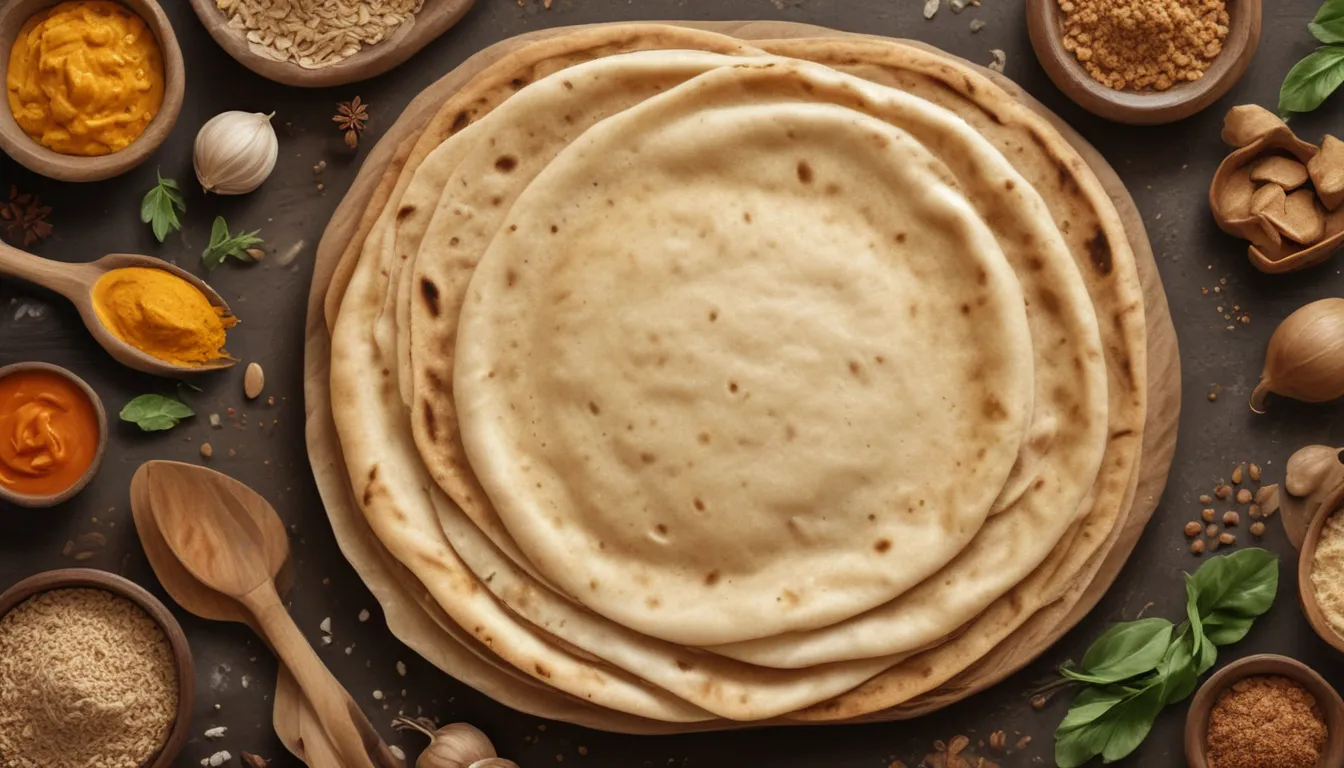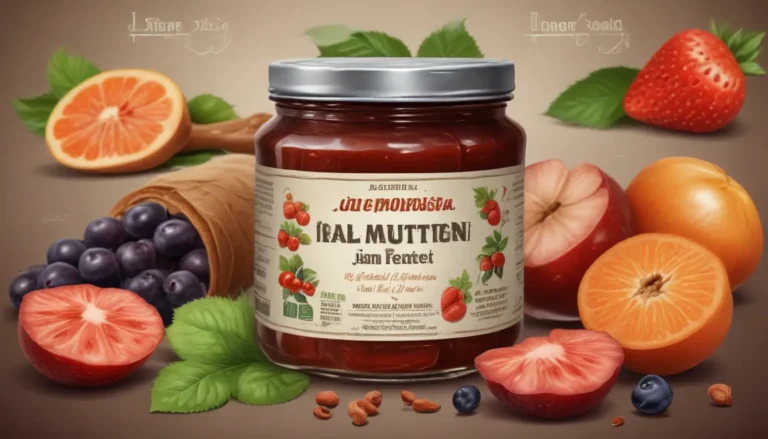The pictures in our articles might not always show exactly what the text is talking about. We use these images to make the article more interesting and eye-catching. They are there to add to the text, but not to replace it or show every detail.
Roti, a beloved traditional Indian bread, is not just a tasty staple in South Asian cuisines but also a powerhouse of essential nutrients. In this comprehensive guide, we will delve into the nutrition facts of roti, exploring its key components, health benefits, and tips for integrating it into a well-rounded diet.
Exploring Roti: A Brief Overview
Roti, a flatbread widely popular in India, Pakistan, Bangladesh, and Nepal, is crafted by kneading whole wheat flour, known as atta, with water and occasionally additional ingredients like salt or oil. The dough is then rolled out and cooked on a hot griddle or tawa until it achieves a fluffy texture and a beautiful golden-brown hue.
Versatile in nature, roti can be savored with an array of dishes, ranging from curries, lentils, and vegetables to serving as a wrap for tantalizing fillings like grilled chicken or paneer.
Unveiling the Nutritional Content of Roti
Caloric Content
A standard serving of roti, equivalent to 50 grams or one medium-sized piece, contains approximately 70-80 calories.
Carbohydrates
Roti predominantly comprises carbohydrates, supplying around 15-20 grams per serving. These carbohydrates serve as the body's primary source of energy. The complex carbohydrates present in whole wheat flour digest slowly, ensuring a sustained energy release.
Fiber
Rich in dietary fiber, roti aids in digestion, fosters bowel regularity, and helps in achieving satiety.
Protein
Roti boasts a moderate protein content, crucial for tissue repair, immune function, and overall well-being. Enhance the protein profile of roti by incorporating ingredients like lentil flour or protein-rich toppings such as yogurt or cottage cheese.
Vitamins and Minerals
Packed with essential vitamins like thiamin, riboflavin, niacin, and folate, roti supports energy metabolism and overall health. It also houses minerals like iron, magnesium, and phosphorus vital for bodily functions.
Low in Fat and Cholesterol
Naturally low in fat and devoid of cholesterol, roti emerges as a healthier alternative to high-fat bread varieties.
Provides Sustained Energy
The complex carbohydrates in roti guarantee a steady energy supply, making it ideal for sustaining physical and mental performance throughout the day.
Promotes Digestive Health
With its fiber-rich composition, roti aids in digestion, maintains gut health, and prevents constipation.
Supports Weight Management
Owing to its high fiber content and lower calorie density, roti fosters satiety, controls appetite, and aligns with weight management goals.
Heart-Healthy
The low-fat content and whole wheat composition of roti contribute to heart health by regulating cholesterol levels and lowering the risk of heart disease.
Nutrient-Dense
Loaded with essential vitamins and minerals like B vitamins and iron, roti serves as a nutrient powerhouse indispensable for overall well-being.
Navigating the Roti Realm: Tips for a Nourishing Experience
Choose Whole Wheat Flour
Opt for whole wheat flour when preparing roti for maximum nutritional benefits, as it retains more nutrients and fiber compared to refined flour.
Add Variety
Experiment with multigrain flours or include nutritious elements like spinach, fenugreek leaves, or grated vegetables into the roti dough to enhance its nutrient profile.
Balance Portions
Maintain a balanced diet by pairing roti with an assortment of vegetables, lentils, lean proteins, and healthy fats while considering portion sizes.
Mindful Toppings
Opt for nutritious toppings like low-fat yogurt, fresh chutneys, or vegetable-based curries instead of heavy gravies or deep-fried accompaniments.
Enjoy Moderately
Although a healthy choice, practicing moderation with roti consumption is key to maintaining a balanced diet and overall well-being.
The Verdict: Roti – A Delicious and Nutritious Delight
In conclusion, roti transcends mere culinary delight to emerge as a nutritional powerhouse. From digestive support and weight management to heart health and blood sugar regulation, integrating roti into your meals can significantly enhance your overall health and well-being. Embrace the flavors of this Indian staple while reaping its myriad health benefits.
Frequently Asked Questions (FAQs)
Is roti gluten-free?
Roti is not gluten-free, as it is crafted from whole wheat flour containing gluten. Individuals with gluten intolerance or celiac disease should opt for gluten-free alternatives.
Can roti aid in weight loss?
Roti can be part of a weight loss diet due to its high fiber content and lower calorie density, which helps control appetite. However, moderation and overall calorie intake are crucial factors in the context of an individual's diet and activity level.
Is roti healthier than other bread types?
Roti made from whole wheat flour offers more nutrients and fiber than refined bread, making it a healthier choice. Choosing whole wheat or whole grain options is generally preferred over refined bread.
Can roti be frozen and reheated?
Yes, roti can be frozen for later use. When reheating, place the frozen roti on a hot griddle or microwave them until heated through.
Is roti suitable for individuals with diabetes?
Roti made from whole wheat flour is a better option for individuals with diabetes due to its lower glycemic index and higher fiber content. However, portion control and overall carbohydrate intake should be considered, and consulting a healthcare professional for personalized dietary advice is advisable.
Trust in our commitment to delivering credible and engaging content. Each fact we present is contributed by real users like you, ensuring accuracy and reliability. Explore and learn with us, knowing that our dedication to quality and authenticity is unwavering.






